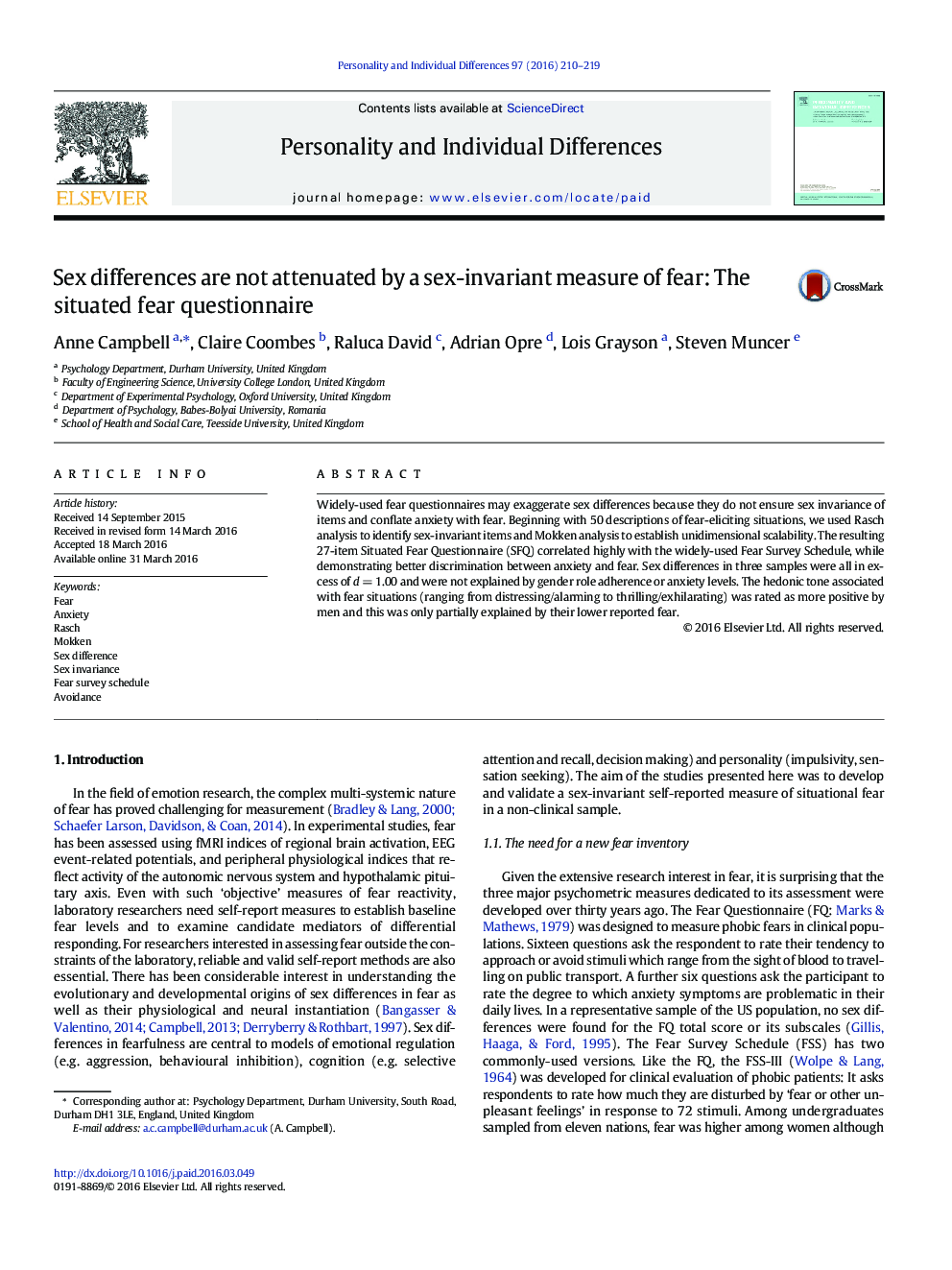| Article ID | Journal | Published Year | Pages | File Type |
|---|---|---|---|---|
| 7250049 | Personality and Individual Differences | 2016 | 10 Pages |
Abstract
Widely-used fear questionnaires may exaggerate sex differences because they do not ensure sex invariance of items and conflate anxiety with fear. Beginning with 50 descriptions of fear-eliciting situations, we used Rasch analysis to identify sex-invariant items and Mokken analysis to establish unidimensional scalability. The resulting 27-item Situated Fear Questionnaire (SFQ) correlated highly with the widely-used Fear Survey Schedule, while demonstrating better discrimination between anxiety and fear. Sex differences in three samples were all in excess of d = 1.00 and were not explained by gender role adherence or anxiety levels. The hedonic tone associated with fear situations (ranging from distressing/alarming to thrilling/exhilarating) was rated as more positive by men and this was only partially explained by their lower reported fear.
Related Topics
Life Sciences
Neuroscience
Behavioral Neuroscience
Authors
Anne Campbell, Claire Coombes, Raluca David, Adrian Opre, Lois Grayson, Steven Muncer,
